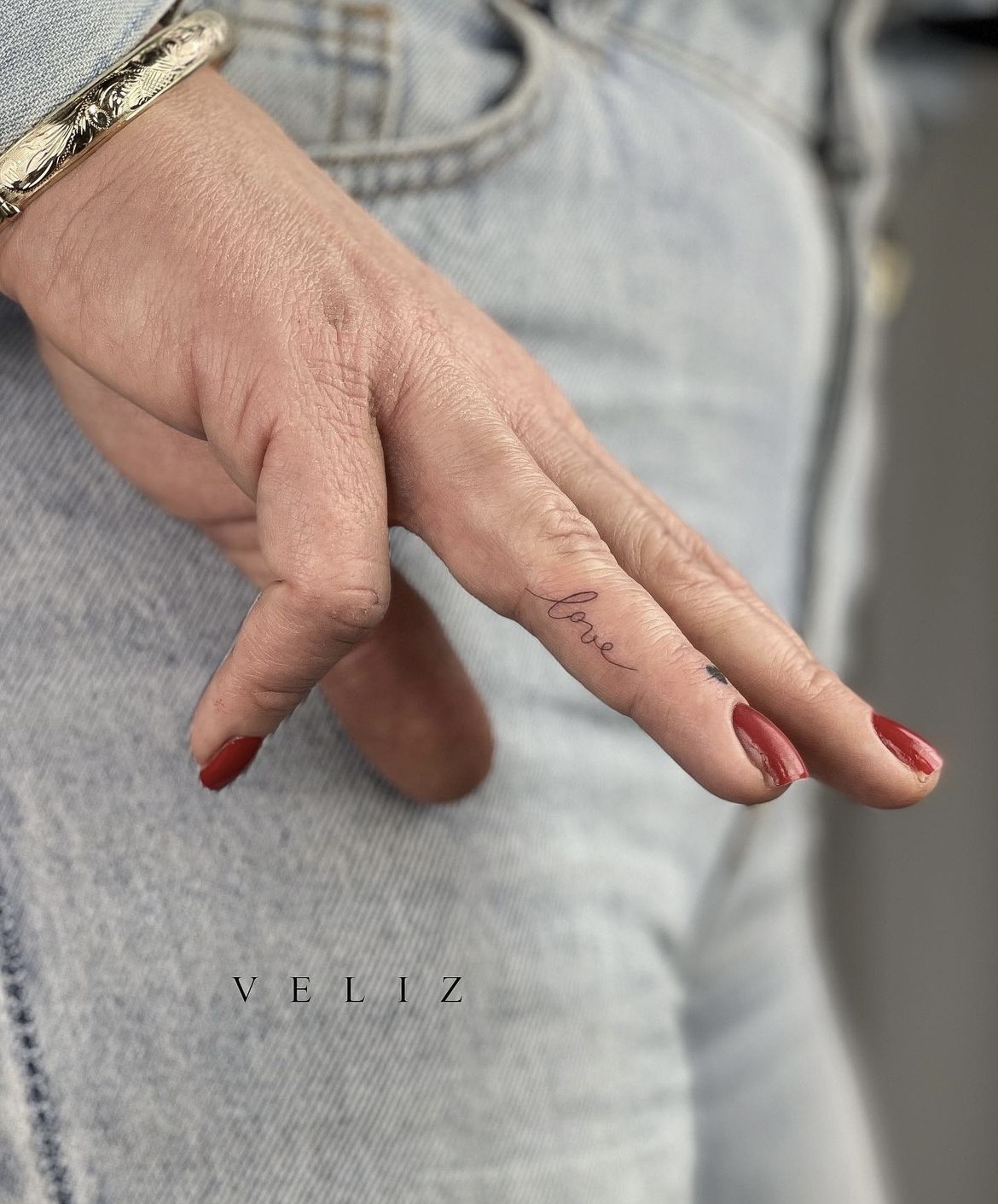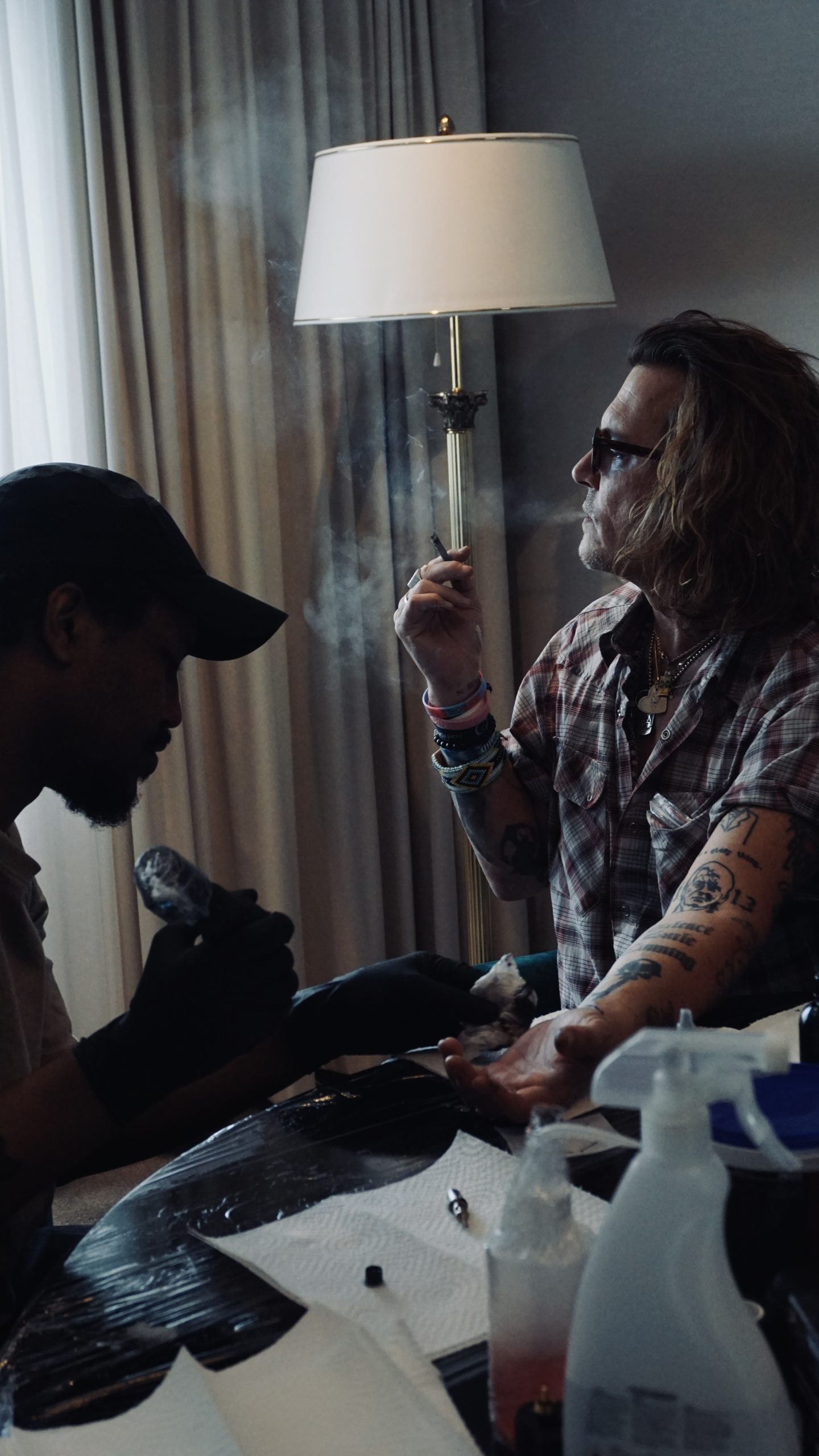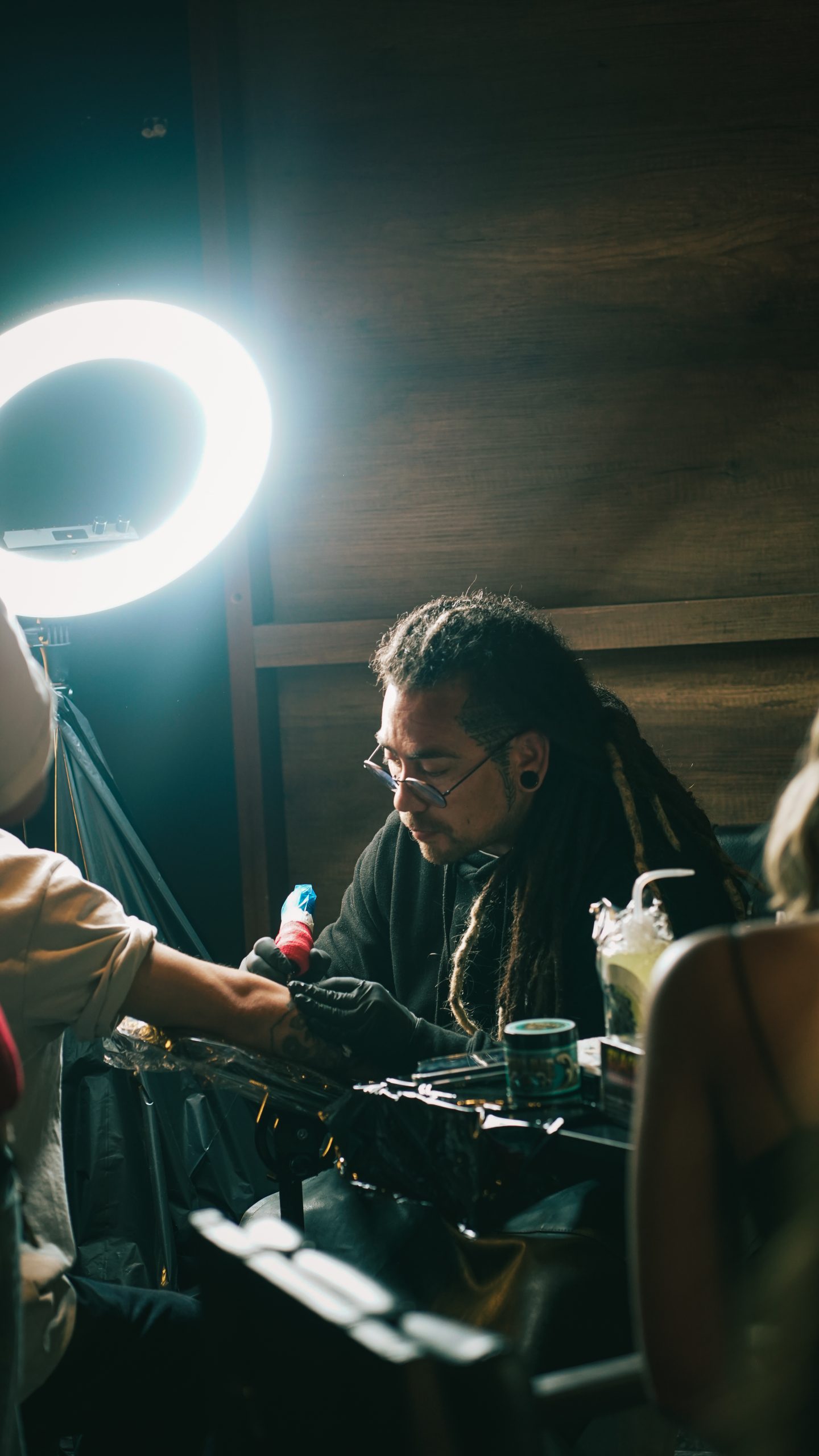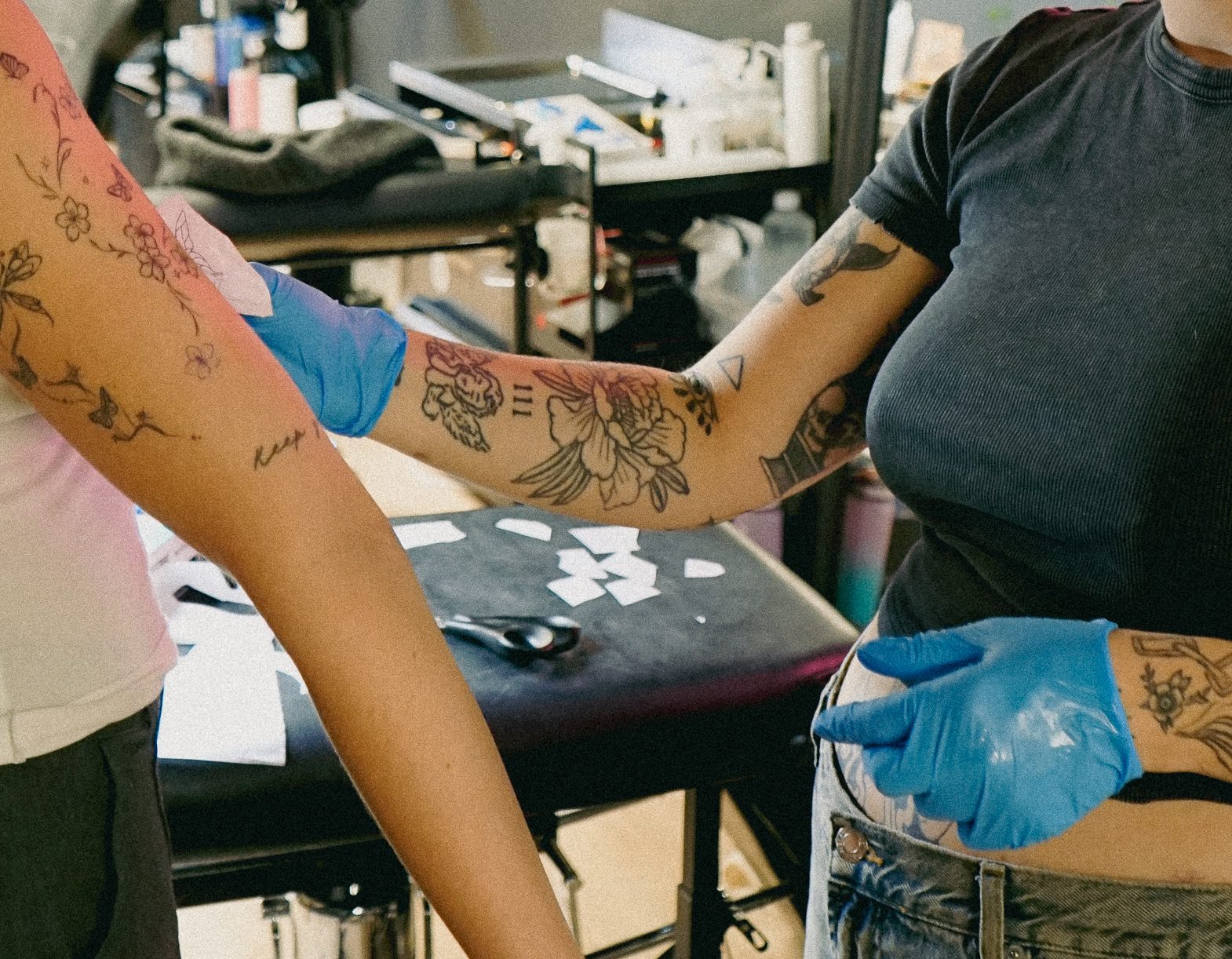SUNBATHING AND SWIMMING WITH A NEW TATTOO?
Sunbathing and swimming should definitely be avoided right after getting a new tattoo. new tattooThis is a common question as summer approaches, and despite the extra challenges the season brings, it remains a peak time for getting tattoos.
While it may be tempting to show off your new tattoo at the beach or pool, it’s crucial to prioritize the healing process to ensure the best results. Exposure to sun and water can cause irritation, prolong the healing process, or, in the worst case, lead to infections.
When you start exposing your tattoo to the sun, it’s recommended to protect it with clothing and use a high SPF sunscreen. This helps preserve the tattoo’s color and quality while protecting your skin during the healing process.

NEW TATTOOS ARE SENSITIVE TO THE SUN
During the first 14 days after getting a new tattoo, it’s absolutely essential to avoid any form of sun exposure. If you’re planning a sunny vacation with lots of swimming and sunbathing, it’s recommended to avoid getting a tattoo for at least 4–6 weeks before your trip. This gives the tattoo time to heal and reduces the risk of damage or fading.
During the first few weeks, your tattoo is highly sensitive to the sun, and UV rays can damage your skin and negatively affect the tattoo’s appearance. For optimal protection, use sunscreen with at least SPF 50 when outdoors, and make sure to fully cover the tattoo, especially if it’s large. This is particularly important for bigger tattoos, as they take longer to heal. As for tanning beds, avoid direct UV exposure by covering the tattoo with clothing.
Wondering how to get back to working out after getting a new tattoo? Check out our guide on exercise and tattoos for practical tips on how to protect your tattoo during the healing process. Proper care ensures a great and long-lasting result!
When Can You Swim After Getting a Tattoo?
When it comes to tattoos and swimming, the main rule is to avoid swimming for at least the first two weeks after getting a new tattoo. This timeframe can vary depending on factors like the size of the tattoo and your body’s healing speed. Larger tattoos or tattoos in certain areas of the body may take longer to heal completely.
It’s important to distinguish between swimming and showering. Showering is safe as long as you avoid scrubbing the tattoo or exposing it to a strong stream of water. However, you should avoid bathtubs, swimming pools, saltwater, and hot tubs. Prolonged exposure to water can allow bacteria and impurities to enter the skin, which is vulnerable after the procedure. This can increase the risk of infection and delay the healing process.
To protect your new tattoo and achieve the best results, it’s essential to follow the recommended healing advice and avoid swimming during this critical period. Take care of your skin with proper aftercare to ensure your tattoo stays vibrant and beautiful over time.
SKIN COLOR AND TANNING
For people with fair, Scandinavian skin, it’s important to be aware of the increased risk of sunburn, especially when it comes to tattoos. Sunburn on a new tattoo can seriously impact the healing process.
Damage such as large scabs, blisters, or other skin reactions can occur from sunburn, potentially leading to ink loss and an uneven tattoo. That’s why it’s crucial to protect your tattoo from direct sunlight, especially during the first few weeks after getting it, when the skin is particularly sensitive.
For optimal protection, it’s recommended to wear clothing that covers the tattoo and apply high-factor sunscreen (SPF 50+) once the skin has fully healed. By avoiding excessive sun exposure, you ensure proper healing and help preserve the tattoo’s color and details as best as possible.
TATTOOS ON TAN SKIN
For people with fair, Scandinavian skin, it’s important to be aware of the increased risk of sunburn, especially when it comes to tattoos. Sunburn on a new tattoo can have serious consequences for the healing process.
Damage such as large scabs, blisters, or other skin reactions can occur from sunburn, potentially leading to ink loss and an uneven tattoo. That’s why it’s crucial to protect your tattoo from direct sunlight, especially during the first few weeks after getting it, when the skin is particularly sensitive.
For optimal protection, it’s recommended to wear clothing that covers the tattoo and apply high-factor sunscreen (SPF 50+) once the skin is fully healed. By avoiding excessive sun exposure, you ensure proper healing and help preserve the tattoo’s color and details as best as possible.
SUN AND OLDER TATTOOS
Although tattoos are most vulnerable to sun damage in the first weeks and months after being done, sunlight will gradually affect them over time, no matter how old the tattoo is. This process can be compared to the effect of Laser treatment, where light breaks down the pigments in the skin.
To keep your tattoo looking fresh and vibrant, it’s important to protect it from the sun throughout your life. Regularly using sunscreen with SPF 30 or higher creates a protective barrier against UV rays, which can cause the tattoo to fade or lose its brightness.
If you notice your tattoo starting to lose color or detail over time, you can contact your tattoo artist for a touch-up. This can restore vibrancy and intensity to the design. By prioritizing sun protection and proper maintenance, you can ensure your tattoo stays sharp, detailed, and beautiful for many years to come.
You can absolutely get a tattoo in the summer; there are just a few extra things to keep in mind.
You can absolutely get a tattoo in the summer; there are just a few extra things to keep in mind.



Get to know us better at Instagram.































